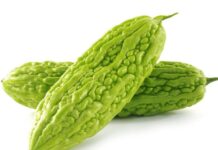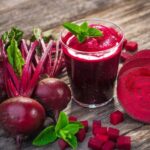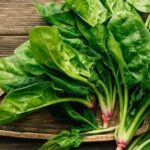Pineapple and mango – two familiar fruits of Vietnam – are renowned not only for their delicious taste but also as nature’s gifts packed with nutritional benefits. Notably, they are naturally “clean,” with minimal use of pesticides in their cultivation. Let’s explore the amazing health benefits of these fruits and how to incorporate them into our daily diets!
Vietnamese Pineapple and Mango: Natural Beauty from Rural Gardens
Pineapple and mango are prevalent fruits in Vietnam, deeply ingrained in the locals’ lifestyle. The pineapple season typically spans from March to July, while mangoes are available from April to August. With a tropical monsoon climate and fertile land, these fruits thrive and yield abundant harvests.
According to agricultural experts, pineapples and mangoes are predominantly grown using traditional or organic methods, relying less on pesticides. A 2021 study by VnExpress newspaper revealed that most pineapple-growing regions in Central and Highland Vietnam significantly limit the use of chemical plant protection products. Similarly, mangoes in the Mekong Delta provinces are primarily cultivated using natural water sources and sunlight.
Beyond their delightful flavors, pineapples and mangoes are nutrient-dense powerhouses. Pineapples are rich in vitamin C, bromelain enzyme, and fiber. Mangoes, on the other hand, boast high levels of vitamin A, vitamin C, and potent antioxidants. This makes them an excellent addition to your daily menu.
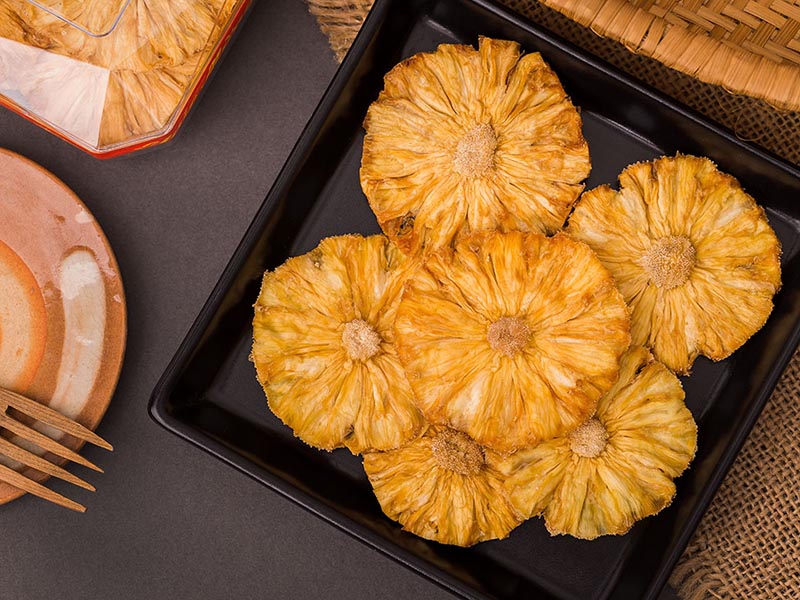
Pineapple’s Golden Health Benefits
Abundant in Vitamin C and Antioxidants
Pineapple is a treasure trove of vitamin C, a potent antioxidant that bolsters the immune system and safeguards cells from free radical damage. According to Dr. Nguyen Thi Lam, former Vice Director of the National Institute of Nutrition, “Vitamin C plays a crucial role in supporting collagen synthesis, enhancing skin health, and preventing chronic diseases such as cardiovascular issues and cancer.”
Contains Bromelain Enzyme
The bromelain enzyme in pineapple aids in protein digestion, reducing bloating and improving overall digestion. Additionally, bromelain exhibits anti-inflammatory properties and effectively alleviates joint pain and arthritis. A 2019 study published in the Journal of Nutrition (USA) affirmed the potential of bromelain in the treatment of rheumatoid arthritis.
Cardiovascular Benefits
Pineapple helps lower bad cholesterol (LDL) and stabilizes blood pressure due to its high potassium content. Regular consumption of pineapple also aids in weight loss, as it is rich in fiber yet low in calories.
Other Benefits
Pineapple is also beneficial for the skin, thanks to its anti-aging and natural skin-lightening properties. You can apply pineapple juice topically to soothe sunburn and moisturize your skin.
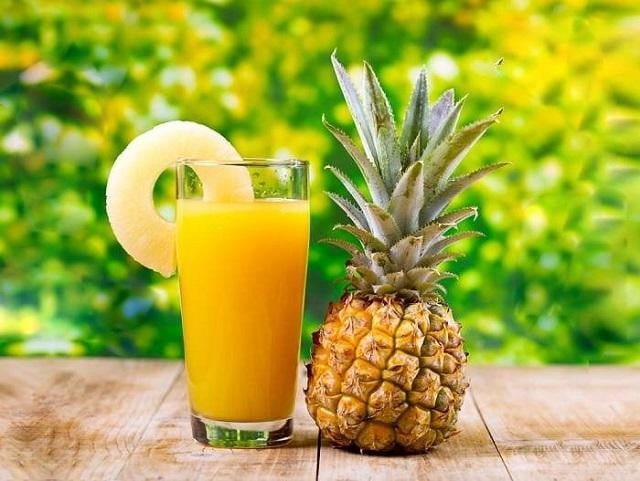
Mango’s Golden Health Benefits
Abundant Source of Vitamin A
Mangoes are among the fruits with the highest vitamin A content, essential for protecting eyesight and preventing eye-related issues like cataracts. Professor Dr. Tran Dang, Chairman of the Vietnam Functional Food Association, emphasized, “Vitamin A is not only beneficial for vision but also boosts the immune system, especially in children and the elderly.”
Rich in Vitamin C and B-Complex Vitamins
Mangoes are an excellent source of vitamin C and B-complex vitamins (B6 and B9), strengthening the immune system, boosting metabolism, and facilitating red blood cell production. This is incredibly beneficial for those seeking sustained energy throughout the day.
Powerful Antioxidant: Mangoferin
Mangoes contain a unique antioxidant compound called Mangoferin, which safeguards cells from free radical damage. Recent studies in the journal Phytotherapy Research suggest that Mangoferin exhibits potential anti-cancer and Alzheimer’s prevention properties.
Aids Digestion
The high fiber content in mangoes prevents constipation and enhances digestive function. Additionally, mangoes contain the enzyme amylase, which aids in carbohydrate breakdown and absorption.
Other Benefits
Mangoes are also a beauty ally for women, as they moisturize and brighten the skin. If you’re aiming to lose weight, eating a few slices of mango before a meal can help induce a feeling of fullness.
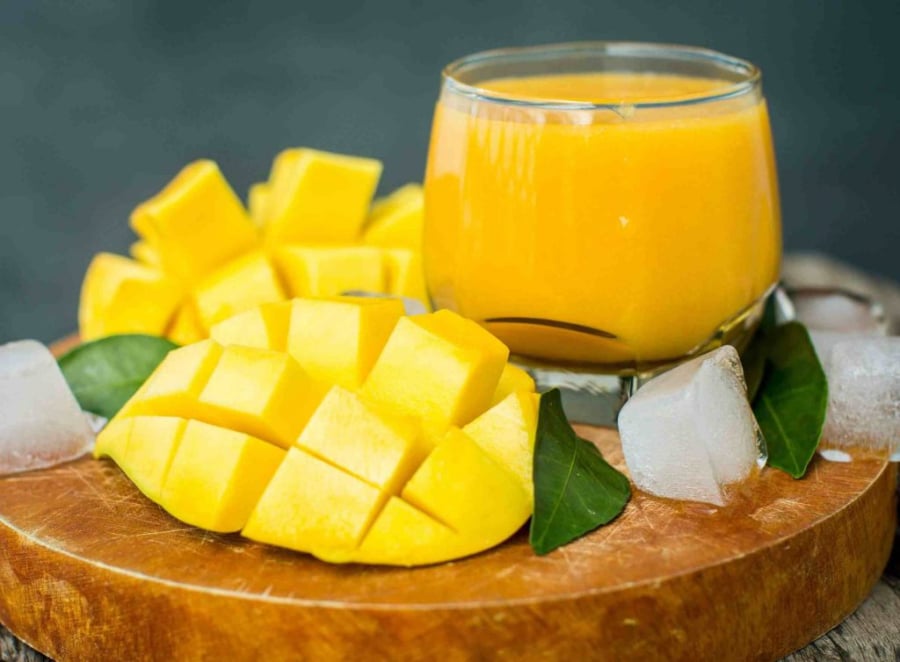
Incorporating Pineapple and Mango into Your Daily Diet
Pineapple Delights
- Pineapple Smoothie: Blend pineapple with yogurt or honey for a refreshing and nutritious smoothie.
- Pineapple Salad: Combine pineapple with greens, chicken, or shrimp for a refreshing salad.
- Grilled Pineapple: Marinate pineapple with salt and honey and grill lightly for a delicious dessert.
- Pineapple Juice: Drink fresh pineapple juice in the morning to detoxify your body.
Mango Treats
- Mango Smoothie: Blend mango with fresh milk and ice for a sweet and creamy treat.
- Mango Salad: Create a sweet and sour mango salad with dried shrimp or shredded chicken.
- Mango Desserts: Bake mango flan or pudding for an afternoon snack.
- Fresh Mango: Enjoy mango as is or chop it into small pieces to top your yogurt.
Note: While pineapples and mangoes offer numerous benefits, it’s best to consume them in moderation (about 1-2 servings/day) to avoid any stomach irritation or excessive internal heat.
Conclusion
Pineapple and mango are not just familiar fruits but also nature’s bounties, brimming with health benefits. They are nutrient-rich, naturally clean, and easily incorporated into daily meals. Include pineapples and mangoes in your diet to relish their delicious flavors and boost your overall health!
For safety, opt for pineapples and mangoes from reputable sources and prioritize organically grown or traditionally cultivated produce.
The Humble Vegetable: A Nutritional Powerhouse Praised by American Experts.
With an exceptionally high iron content that surpasses even beef, this vegetable is being hailed as the new “king of blood enrichment.” Its impressive nutritional profile, packed with essential vitamins and minerals, makes it an unparalleled choice for those seeking to fortify their health and enhance their overall well-being.
“Not Just Any Old Dock: Uncovering the Hidden Gold Beneath the Leaves”
Have you ever imagined that the roots of a wild vegetable growing in your backyard could bring farmers millions of dong per kilo? Amaranth, a humble vegetable reminiscent of many people’s childhood, has now surprisingly gained a new lease of life thanks to its roots, a part often overlooked in the past.













